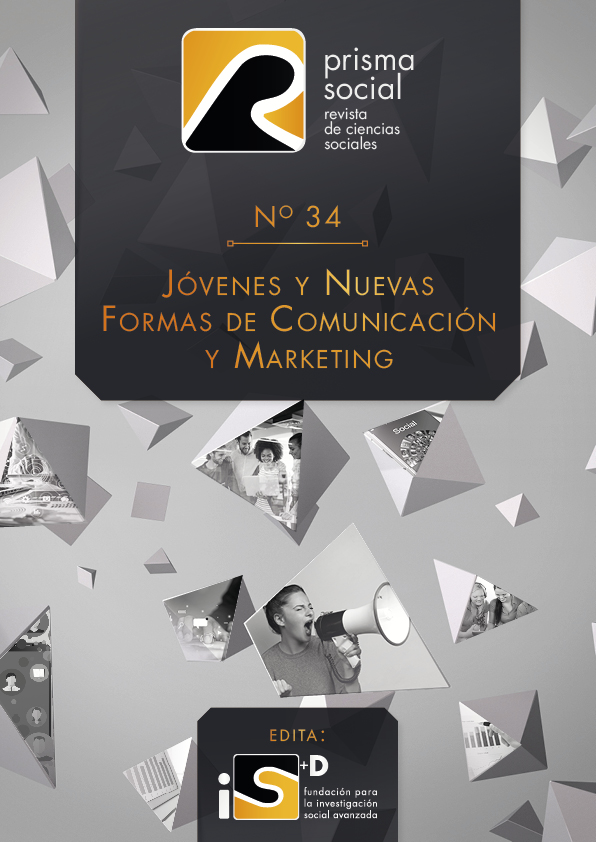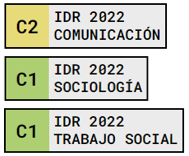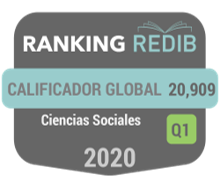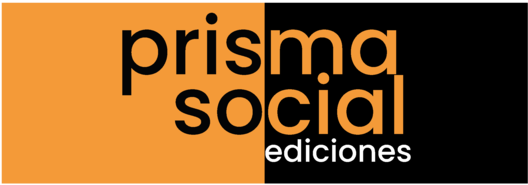Fake o no fake, esa es la cuestión: reconocimiento de la desinformación entre alumnado universitario
Palabras clave:
fake news; desinformación; medios de comunicación; alumnado universitario; verificadores de informaciónResumen
La autenticidad de la información se ha convertido en un tema de gran repercusión social. En el entorno digital, el alcance y los efectos de la difusión de información distorsionada, inexacta o falsa adquieren un enorme potencial por el impacto que tienen en el mundo real, en minutos, para millones de ciudadanos. En esta investigación se ha indagado en las siguientes cuestiones: ¿Es capaz el alumnado universitario de discernir la veracidad de la información que le llega? ¿Cómo y en qué medida los hábitos de consumo de información están relacionados con la cuestión anterior? ¿Conocen instrumentos como los fact-checkers para identificar las fake news, o construyen sus propias estrategias de contraste? También se ha estudiado el nivel de confianza que generan las diferentes fuentes de información, desde medios de comunicación locales y regionales a los grandes medios, así como las redes sociales, con el objetivo de analizar cómo se traduce la crisis de confianza en los medios en los hábitos de consumo de información y cómo se posicionan frente al complejo ecosistema mediático. El trabajo está basado en la administración de un cuestionario a una muestra representativa (n=830) de alumnado de la Universidad de las Islas Baleares. Los resultados del estudio ponen de manifiesto, por un lado, los déficits que presentan los/as universitarios/as a la hora de reconocer noticias falsas, en segundo término, evidencian una muy escasa utilización de herramientas de contraste de la veracidad de la información y, finalmente, permiten perfilar la relación entre distintas tipologías de consumo de información y la capacidad para reconocer las fake news.
Descargas
Citas
Allcott, H., y Gentzkow, M. (2017). Social media and fake news in the 2016 election. Journal of economic perspectives, 31(2), 211-36. https://doi:10.1257/jep.31.2.211
Arranz, R. (2020). Newtral, Maldita… ¿Quién controla a los controladores? Voz Pópuli. https://bit.ly/3mZR9yw
Arrieta, A. (2020): La posverdad es más peligrosa que la mentira. The Conversation. https://bit.ly/3ehC0EL
Association of College and Research Libraries & American Library Association (ACRL-ALA) (2000). Information Literacy Competency Standards for Higher Education. https://bit.ly/3stQ5UN
Borchers, C. (2017). Fake news’ has now lost all meaning. The Washington Post. https://wapo.st/3v9P2uV
Chang, H., y Chuang, S. (2011). Social capital and individual motivations on knowledge sharing: Participant involvement as a moderator. Information & management, 48(1), 9-18. https://doi.org/10.1016/j.im.2010.11.001
Comas, R., Sureda, J., Pastor, M., y Morey, M. (2011). La búsqueda de información con fines académicos entre el alumnado universitario. Revista española de documentación científica, 34(1), 44-64. https://doi.org/10.3989/redc.2011.1.769
Dumitru, E. A. (2020). Testing children and adolescents’ ability to identify fake news: a combined design of quasi-experiment and group discussions. Societies, 10(3), 71. https://doi.org/10.3390/soc10030071
Figueira, J. y Santos, S. (2019). Percepción de las noticias falsas en universitarios de Portugal: análisis de su consumo y actitudes. El profesional de la información, 28(3). https://doi.org/10.3145/epi.2019.may.15
Howard, P. N., Bolsover, G., Kollanyi, B., Bradshaw, S., y Neudert, L. M. (2017). Junk news and bots during the US election: What were Michigan voters sharing over Twitter. CompProp, Data Memo. https://bit.ly/2QftXjN
Jack, C. (2017). Lexicon of Lies. Data & Society Research Institute. https://bit.ly/3eiySIB
Jones-Jang, S. M., Mortensen, T., y Liu, J. (2021). Does media literacy help identification of fake news? Information literacy helps, but other literacies don’t. American Behavioral Scientist, 65(2), 371-388. https://doi.org/10.1177/0002764219869406
Karnowski, V., Kümpel, A. S., Leonhard, L., y Leiner, D. J. (2017). From incidental news exposure to news engagement. How perceptions of the news post and news usage patterns influence engagement with news articles encountered on Facebook. Computers in Human Behavior, 76, 42-50. https://doi.org/10.1016/j.chb.2017.06.041
Kiernan, R. (2017). With the rise of fake news on social media, can information literacy impact how students evaluate information on their social media channels? Tesis de Máster, Dublin Business School. https://bit.ly/2QGxM1r
Knight Foundation. (2018). Seven ways misinformation spread during the 2016 election. https://bit.ly/2QuVTur
Lazer, D., Baum, M., Benkler, Y., Berinsky, A., Greenchill, K., Menczer, F., Metzger, M., Nyhan, B., Pennycook, G., Rothschild, D., Schudson, M., Sloman, S., Sunstein, C., Thorson, E., Watts, D., y Zittrain, J. (2018). The science of fake news. Science 359(6380), 1094-1096. https://doi:10.1126/science.aao2998
Leeder, C. (2019). How college students evaluate and share “fake news” stories. Library and Information Science Research, 41(100967). https://doi.org/10.1016/j.lisr.2019.100967
Levi, S. (2019). #Fake You. Fake news y desinformación. Rayo Verde.
Loos, E., Ivan, L. y Leu, D. (2018), “Save the Pacific Northwest tree octopus”: a hoax revisited. Or: How vulnerable are school children to fake news? Information and Learning Sciences, 119(9/10), 514-528. https://doi.org/10.1108/ILS-04-2018-0031
Marwick, A., y Lewis, R. (2017). Media manipulation and disinformation online. Data & Society Research Institute. https://bit.ly/3drQxhT
McIntyre, L. (2018). Post-truth. MIT Press. https://doi:10.7551/mitpress/11483.001.0001
Metzger, M. J., Flanagin, A. J., Markov, A., Grossman, R., y Bulger, M. (2015). Believing the unbelievable: understanding young people's information literacy beliefs and practices in the United States. Journal of Children and Media, 9(3), 325-348. https://doi.org/10.1080/17482798.2015.1056817
Mikkelson, D. (2016). We have a bad news problem, not a fake news problem. Snopes. https://bit.ly/3n0hnAN
Musgrove, A. T., Powers, J. R., Rebar, L. C., & Musgrove, G. J. (2018). Real or fake? Resources for teaching college students how to identify fake news. College & Undergraduate Libraries, 25(3), 243-260. https://doi.org/10.1080/10691316.2018.1480444
Newman, N. (2020). Journalism, Media, and Technology Trends and Predictions 2020. Reuters Institute, University of Oxford. https://bit.ly/3wit6Or
Nielsen, R. y Graves, L. (2017). “News you don’t believe”: Audience perspectives on fake news. Reuters Institute for the study of Journalism report. https://bit.ly/3eiOtIn
O’Neil, C. (2017). How can we stop algorithms telling lies?. The Guardian. https://bit.ly/3uXbXJy
O’Neil, C. (2019). Armas de destrucción matemática. Cómo el big data aumenta la desigualdad y amenaza la democracia. Capitán Swing.
Pennycook, G., Cannon, T. D., y Rand, D. G. (2018). Prior exposure increases perceived accuracy of fake news. Journal of experimental psychology: general, 147(12), 1865. https://doi.org/10.1037/xge0000465
Ramonet, I. (2002): Una ecología de la información. La Voz de Galicia. https://bit.ly/3efwMtg
Shu, K., y Liu, H. (2019). Detecting fake news on social media. Synthesis lectures on data mining and knowledge discovery, 11(3), 1-129. https://doi.org/10.2200/S00926ED1V01Y201906DMK018
Silverman, C., y Singer-Vine, J. (2016). Most Americans who see fake news believe it, new survey says. BuzzFeed news. https://bit.ly/3su96pR
Sobral, F., & de Morais, N. S. N. (2020). Información falsa en la red: la perspectiva de un grupo de estudiantes universitarios de comunicación en Portugal. Revista Prisma Social, 29, 172-194. https://bit.ly/2TuNT3Y
Tandoc E. C., Lim, Z. W., y Ling, R. (2018). Defining “fake news” A typology of scholarly definitions. Digital journalism, 6(2), 137-153. https://doi.org/10.1080/21670811.2017.1360143
Timmers, C.F. y Glass, C.A. (2010). Developing scales for information-seeking behaviour. Journal of Documentation, 66, 46-69 https://doi.org/10.1108/00220411011016362
UNESCO. (2017). Alfabetización mediática e informacional. https://bit.ly/3tzVLOk
Wagner, A. (2020). Coronabulos, conspiranoia e infodemia: claves para sobrevivir a la posverdad. The Conversation. https://bit.ly/2RHmcmZ
Warner-Søderholm, G., Bertsch, A., Sawe, E., Lee, D., Wolfe, T., Meyer, J., y Fatilua, U. N. (2018). Who trusts social media?. Computers in human behavior, 81, 303-315. https://doi.org/10.1016/j.chb.2017.12.026
Yunong, L. (2019). Influences on the ability to recognise fake news. Tesis de Máster, Auckland University of Technology. https://bit.ly/3x5aYJv
Descargas
Publicado
Cómo citar
Número
Sección
Licencia
Derechos de autor 2021 Revista Prisma Social

Esta obra está bajo una licencia internacional Creative Commons Atribución-NoComercial-SinDerivadas 4.0.
Los autores/as que publiquen en esta revista aceptan las siguientes condiciones:
- Los autores/as conservan los derechos de autor.
- Los autores/as ceden a la revista el derecho de la primera publicación. La revista también posee los derechos de edición.
- Todos los contenidos publicados se regulan mediante una Licencia Atribución/Reconocimiento-SinDerivados 4.0 Internacional. Acceda a la versión informativa y texto legal de la licencia. En virtud de ello, se permite a terceros utilizar lo publicado siempre que mencionen la autoría del trabajo y a la primera publicación en esta revista. Si transforma el material, no podrá distribuir el trabajo modificado.
- Los autores/as pueden realizar otros acuerdos contractuales independientes y adicionales para la distribución no exclusiva de la versión del artículo publicado en esta revista (p. ej., incluirlo en un repositorio institucional o publicarlo en un libro) siempre que indiquen claramente que el trabajo se publicó por primera vez en esta revista.
- Se permite y recomienda a los autores/as a publicar su trabajo en Internet (por ejemplo en páginas institucionales o personales), una vez publicado en la revista y citando a la misma ya que puede conducir a intercambios productivos y a una mayor y más rápida difusión del trabajo publicado (vea The Effect of Open Access).


















